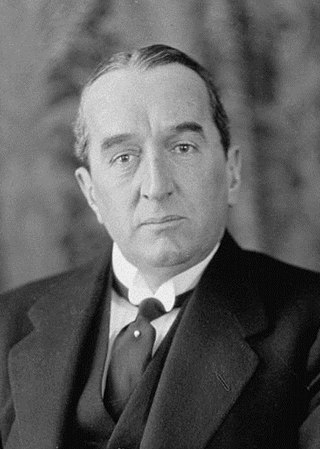Top Qs
Timeline
Chat
Perspective
1928 Australian federal election
From Wikipedia, the free encyclopedia
Remove ads
The 1928 Australian federal election was held in Australia on 17 November 1928. All 75 seats in the House of Representatives and 19 of the 36 seats in the Senate were up for election. The incumbent Nationalist–Country coalition, led by Prime Minister Stanley Bruce won a record fifth consecutive election defeating the opposition Labor Party led by James Scullin.
The election was held in conjunction with a referendum on Commonwealth–State relations, which was carried.
Future Prime Ministers John Curtin and Ben Chifley both entered parliament at this election. Both then lost their seats in the 1931 election and did not re-enter parliament until 1934 and 1940 respectively.
Remove ads
Issues
In September 1928, federal treasurer Earle Page introduced the National Insurance Bill 1928 into the House of Representatives, which provided for the establishment of a National Insurance scheme inclusive of "sickness, old age, disability and maternity benefits, mainly paid for by compulsory contributions by workers and employers, along with smaller payments to parents of children under 16 and to orphans".[2] The bill failed to pass before the dissolution of the House, but the scheme was "strongly promoted" by the government during the election campaign.[3]
Remove ads
Results
Summarize
Perspective

Nationalist: 29 seats
Labor: 31 seats
Country: 13 seats
Country Progressive: 1 seat
Independent: 1 seat
House of Representatives
Notes
- Independent: William McWilliams (Franklin, Tas.).
- Twelve members were elected unopposed – three Labor, five Nationalist, and four Country.
Senate
Remove ads
Seats changing hands
Summarize
Perspective
- Members listed in italics did not contest their seat at this election.
In the Division of Indi, the sitting candidate Robert Cook lost his seat after forgetting to file nomination papers, resulting in Labor candidate Paul Jones winning the seat unopposed.
Remove ads
See also
Notes
- The Northern Territory had one seat, but members for the territories did not have full voting rights until 1966 and did not count toward government formation.
- Albert Dunstan was the member for Korong and Eaglehawk in the Victorian Legislative Assembly and did not contest the federal election.[1]
- Including Northern Territory
References
External links
Wikiwand - on
Seamless Wikipedia browsing. On steroids.
Remove ads






